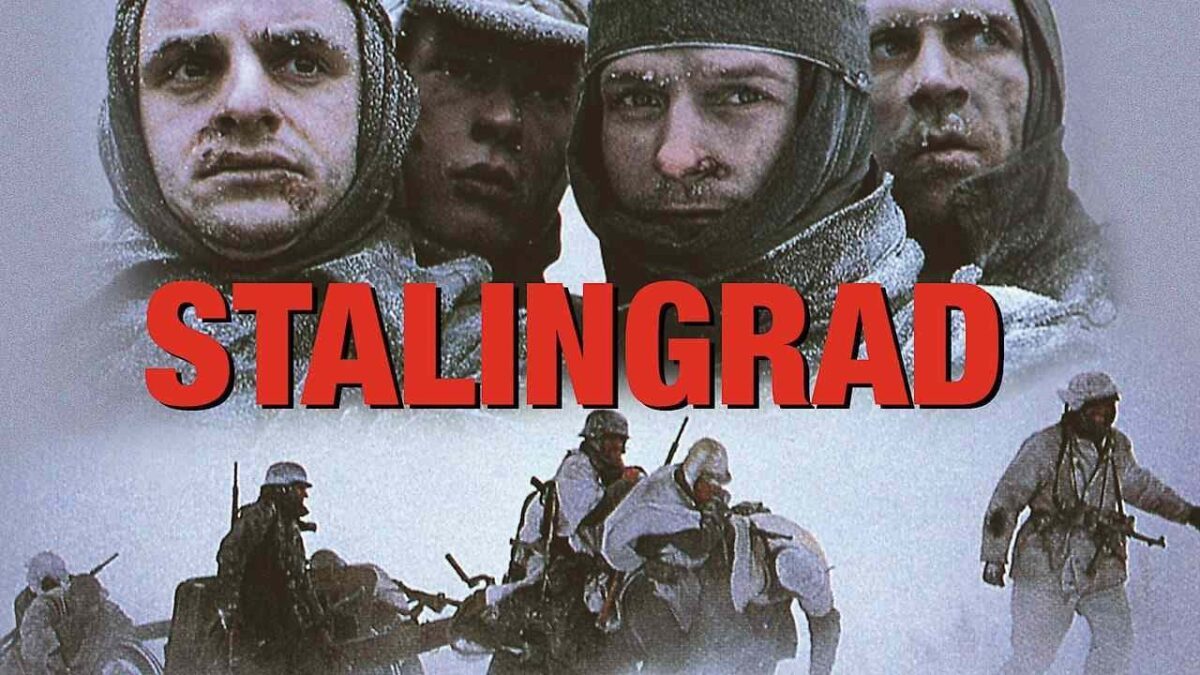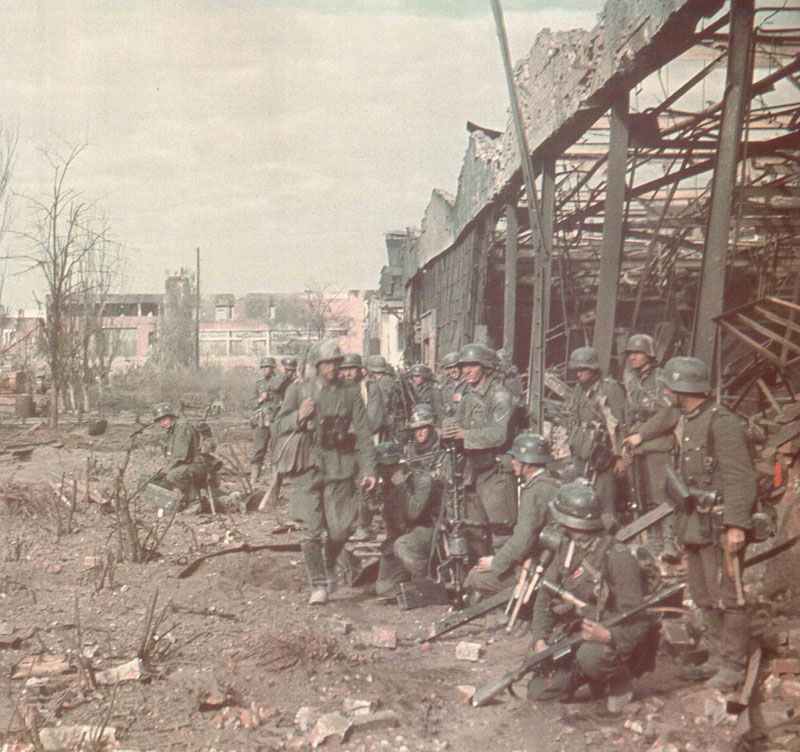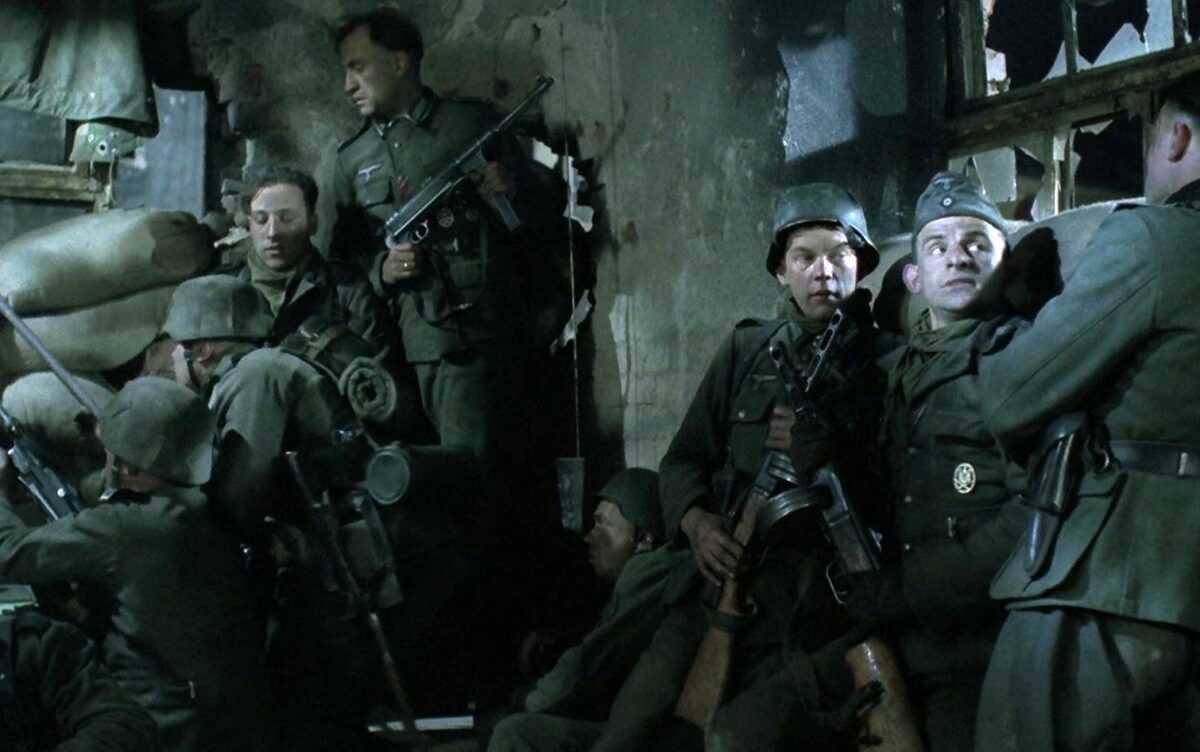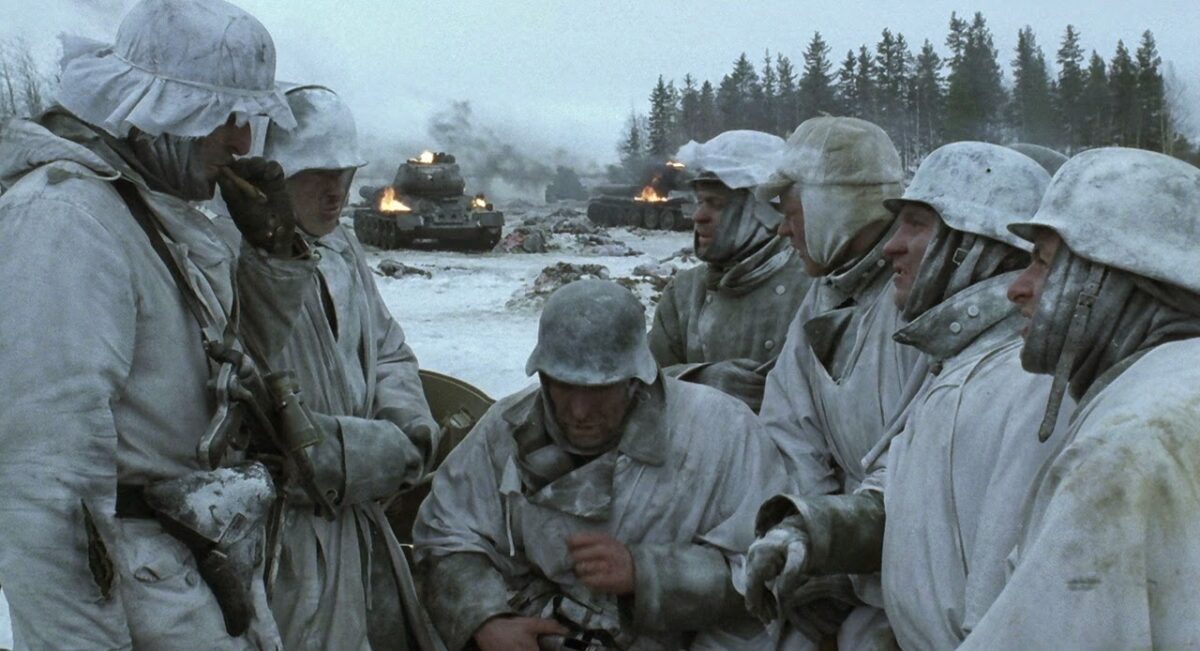Exploring the German War Movie ‘Stalingrad’ (1993): A Gripping Portrayal of the Battle and its Human Toll.

The film ‘Stalingrad’ takes viewers on a harrowing journey through the eyes of a group of German soldiers who find themselves trapped in the besieged city of Stalingrad. As the battle rages on around them, the soldiers are forced to confront the horrors of war and the devastating consequences of their actions. Director Joseph Vilsmaier skillfully captures the physical and emotional toll that the war takes on the characters, immersing the audience in their experiences and making them question the morality of war.
One of the film’s strengths lies in its attention to detail and historical accuracy. Vilsmaier meticulously recreates the war-torn city of Stalingrad, using practical effects and realistic sets to transport viewers back in time. From the rubble-filled streets to the dilapidated buildings, every aspect of the production design contributes to the film’s gritty and authentic atmosphere.
The performances in ‘Stalingrad’ are also worth noting. The cast, which includes Thomas Kretschmann, Dominique Horwitz, and Jochen Nickel, delivers powerful and nuanced performances that bring the characters to life. Their portrayals of soldiers grappling with fear, guilt, and the complexities of war add depth and complexity to the narrative.
Furthermore, the film explores the psychological impact of war on the soldiers. As the battle rages on, the characters are pushed to their limits, both physically and mentally. Vilsmaier delves into the psychological trauma that war inflicts on individuals, highlighting the toll it takes on their sanity and humanity. The film raises important questions about the nature of war and its effects on those who participate in it.
In addition to its exploration of the human experience in war, ‘Stalingrad’ also offers a thought-provoking examination of the larger historical context. Through its portrayal of the Battle of Stalingrad, the film sheds light on the devastating consequences of Hitler’s military ambitions and the impact they had on both the German soldiers and the Russian civilians caught in the crossfire. By focusing on the individual stories within the larger conflict, ‘Stalingrad’ humanizes the war and reminds viewers of the personal tragedies that occur amidst the grand scale of battle.
In conclusion, ‘Stalingrad’ is a compelling and impactful war film that offers a unique perspective on the Battle of Stalingrad. Through its attention to detail, powerful performances, and exploration of the psychological and historical aspects of war, the film immerses viewers in the brutal realities of the conflict. It serves as a reminder of the human cost of war and the importance of understanding the experiences of those who lived through it.
The Historical Context: The Battle of Stalingrad

The Battle of Stalingrad, which took place from August 23, 1942, to February 2, 1943, was a major turning point in World War II. It was fought between Nazi Germany and its allies against the Soviet Union for control of the city of Stalingrad (now Volgograd) in southwestern Russia. The battle was marked by its ferocity and high casualties, with estimates suggesting that over two million lives were lost.
The German army, under the command of General Friedrich Paulus, launched an offensive to capture Stalingrad, a strategic location on the Volga River. However, the Soviet forces, led by General Vasily Chuikov, fiercely defended the city, turning it into a deadly battleground. The battle was characterized by brutal urban warfare, with both sides suffering heavy losses.
The significance of the Battle of Stalingrad cannot be overstated. It was not only a crucial battle in terms of military strategy but also a symbolic one. Stalingrad, named after Soviet leader Joseph Stalin, held immense ideological and emotional value for the Soviet Union. The city represented the resilience and determination of the Soviet people in the face of Nazi aggression.
As the battle raged on, the conditions in Stalingrad deteriorated rapidly. The city was reduced to ruins, with buildings collapsing under the relentless bombardment and constant fighting. The soldiers on both sides endured unimaginable hardships, fighting street by street, house by house. The bitter cold of the Russian winter added to their misery, freezing their weapons and making survival even more difficult.
Despite the overwhelming odds, the Soviet forces managed to hold their ground and gradually turn the tide of the battle. They employed innovative tactics, such as building a network of underground tunnels and using snipers to pick off German soldiers. The Soviet soldiers, motivated by their love for their homeland and their determination to protect it at all costs, fought with unwavering bravery and resilience.
The turning point in the battle came in November 1942, when the Soviet Union launched a massive counteroffensive. The Red Army encircled the German forces, trapping them in Stalingrad. Cut off from their supply lines and facing relentless Soviet attacks, the German soldiers suffered from hunger, exhaustion, and disease. By February 1943, the remaining German troops surrendered, marking a decisive victory for the Soviet Union.
The Battle of Stalingrad had far-reaching consequences. It not only halted the German advance into the Soviet Union but also boosted Soviet morale and turned the tide of the war in favor of the Allies. The defeat at Stalingrad shattered the myth of German invincibility and marked a turning point in World War II.
‘Stalingrad’ (1993) captures the horrors and challenges faced by soldiers on both sides of the conflict, providing a glimpse into the brutal reality of war. The film portrays the devastating impact of the battle on the lives of ordinary people, highlighting the immense sacrifices made by soldiers and civilians alike in the fight for Stalingrad.
The Plot and Characters

‘Stalingrad’ follows a group of German soldiers as they experience the horrors of war during the Battle of Stalingrad. The film focuses on the 6th Army, led by General Paulus, and their gradual descent into chaos and despair.
The main characters in the film include:
- Captain Hauptmann Hermann Musk: A seasoned officer who initially believes in the German cause but becomes disillusioned as the battle progresses. Musk’s character arc explores the moral dilemmas faced by soldiers who are torn between their duty to their country and their own conscience. As the battle rages on, he witnesses the devastating consequences of war on both sides, leading him to question the very nature of the conflict.
- Lieutenant Hans von Witzland: A young and idealistic officer who struggles to maintain his humanity amidst the brutality of war. Witzland’s character represents the innocence lost in the face of war. He is initially filled with patriotic fervor, but as the battle unfolds and he witnesses the atrocities committed by both sides, he begins to question the righteousness of the cause he is fighting for. Through his eyes, the audience is able to see the transformation of a young and hopeful soldier into a hardened and disillusioned man.
- Fritz Reiser: A soldier with a strong sense of duty and loyalty to his comrades. Reiser’s character embodies the camaraderie and brotherhood that develops among soldiers in the midst of war. Despite the horrors they face, Reiser remains steadfast in his commitment to his fellow soldiers and is willing to sacrifice himself for their well-being. His character serves as a reminder of the bonds that are forged in the crucible of war.
- GeGe Müller: A medic who witnesses the devastating effects of war on both soldiers and civilians. Müller’s character provides a unique perspective on the human cost of war. As he tends to the wounded and dying, he is confronted with the harsh reality of the battle. Through his experiences, the audience is able to see the physical and emotional toll that war takes on individuals, highlighting the senselessness and futility of the conflict.
The film also portrays the experiences of Soviet soldiers and civilians caught in the crossfire, adding depth and complexity to the narrative. By showing the perspectives of both sides, ‘Stalingrad’ offers a more nuanced portrayal of the Battle of Stalingrad, highlighting the human tragedy that unfolded amidst the larger strategic objectives. The inclusion of these characters allows the audience to see the impact of the battle on a broader scale, emphasizing the immense suffering endured by all those involved.
The film’s attention to detail is evident in every frame, from the meticulously recreated sets to the authentic costumes worn by the actors. This level of authenticity adds to the overall immersive experience, allowing the audience to truly feel as though they are witnessing history unfold before their eyes.
One of the most striking aspects of ‘Stalingrad’ is its portrayal of the camaraderie and bonds formed between soldiers. The film explores the relationships between the characters, highlighting the importance of friendship and support in the face of unimaginable adversity. These relationships provide moments of respite amidst the chaos, reminding the audience of the humanity that still exists even in the darkest of times.
In addition to its powerful storytelling, ‘Stalingrad’ also boasts a hauntingly beautiful score that further enhances the emotional impact of the film. The music, composed by Ludwig van Beethoven and Sergei Prokofiev, adds depth and complexity to the narrative, evoking a range of emotions from despair to resilience.
The film’s narrative structure is also worth noting, as it seamlessly weaves together multiple storylines to provide a comprehensive and nuanced portrayal of the battle. Through the perspectives of both German and Soviet soldiers, ‘Stalingrad’ offers a balanced and unbiased account of the events that unfolded during the battle.
Overall, ‘Stalingrad’ is a masterful piece of cinema that not only entertains but also educates and enlightens. It serves as a powerful reminder of the sacrifices made by those who fought in the battle and the enduring impact it had on the world. Whether you are a history enthusiast or simply a lover of great filmmaking, ‘Stalingrad’ is a must-see film that will leave a lasting impression.

One of the reasons why ‘Stalingrad’ (1993) holds such significance in the genre of war movies is its unique perspective on the Battle of Stalingrad. While many war films focus primarily on the strategic and military aspects of battles, ‘Stalingrad’ takes a different approach by highlighting the human side of the conflict. The film portrays the experiences of soldiers and civilians caught in the midst of the brutal battle, showcasing their struggles, fears, and sacrifices.
By presenting the human experience within historical events, ‘Stalingrad’ serves as a powerful reminder of the devastating consequences of war. It highlights the immense physical and emotional toll that warfare takes on individuals, families, and communities. The film portrays the horrors of battle, the loss of loved ones, and the psychological trauma that soldiers endure. Through its poignant storytelling, ‘Stalingrad’ prompts viewers to reflect on the true cost of war and the importance of striving for peace.
Since its release, ‘Stalingrad’ has garnered critical acclaim and has developed a dedicated following. The film’s success can be attributed to various factors. Firstly, its authentic depiction of historical events adds to its credibility and resonance. The filmmakers went to great lengths to recreate the battle scenes and settings with meticulous attention to detail, resulting in a visually stunning and immersive experience for the audience.
Additionally, the emotional depth of the characters in ‘Stalingrad’ contributes to its impact. The film portrays a diverse group of individuals, each with their own unique stories and motivations. As viewers become invested in the characters’ journeys, they gain a deeper understanding of the human experience within the context of war. This emotional connection helps to create a lasting impression and makes ‘Stalingrad’ a film that resonates long after the credits roll.
Furthermore, ‘Stalingrad’ (1993) has had a lasting legacy in the world of war movies. The film demonstrated the potential for war films to go beyond mere action sequences and delve into the psychological and emotional impact of conflict. It paved the way for future movies that explore the human aspect of warfare, inspiring filmmakers to create narratives that prioritize character development and personal stories alongside the larger historical events.
In conclusion, ‘Stalingrad’ (1993) is a significant film in the genre of war movies due to its unique perspective, powerful storytelling, and authentic depiction of historical events. It serves as a reminder of the devastating consequences of war and the importance of understanding the human experience within historical events. With its critical acclaim and lasting legacy, ‘Stalingrad’ continues to be a film that captivates audiences and contributes to the evolution of war movies.
Watch the full movie here (English subs):



